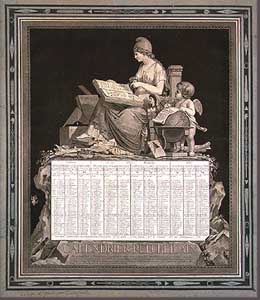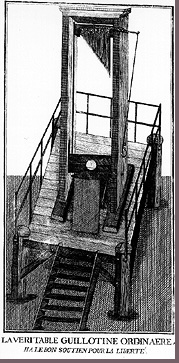In October 1793, the Jacobin government gave France a time system reflective of the new political realities. The Jacobins retrospectively set the first day of the first year as 22 September 1792, the day the French national government abolished the monarchy. Each year thus began in September, and the calendar endured into the Napoleonic era before it was abandoned. Revolutionary Calendar years were divided into 12 months of 30 days, followed by five or six additional days. The additional days at the end of the year (sans culottides) were Virtue Day, Genius Day, Labor Day, Reason Day, Rewards Day, and Revolution Day (the leap day). Leap years (with a sixth additional day) occurred on years III, VII, and XI. This calendar was in effect until December 31, 1805, proving less durable than the metric reforms. |
Vendémiaire, the month of vintage, mid-September through mid- October
Brumaire, the month of fog, mid-October through mid- November
Frimaire, the month of frost, mid-November through mid- December
Nivôse, the month of snow, mid-December through mid-January
Pluviôse, the month of rain, mid-January through mid-February
Ventôse, the month of wind, mid-February through mid-March
Germinal, the month of budding, mid-March through mid-April
Floréal, the month of flowers, mid-April through mid-May
Prairial, the month of meadows, mid-May through mid-June
Messidor, the month of harvest, mid-June through mid-July
Thermidor, the month of heat, mid-July through mid-August
Fructidor, the month of fruit, mid-August through mid- September
|  |


 Return to
Return to